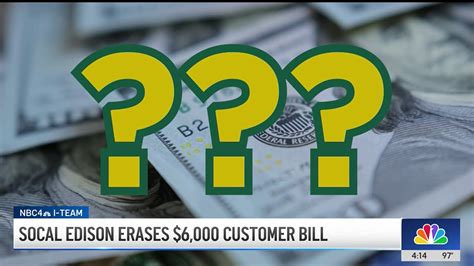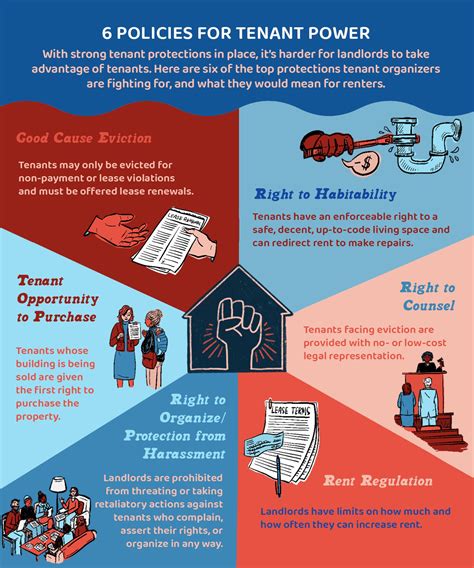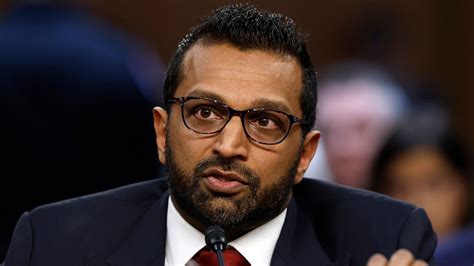
A California homeowner was left with a $6,000 bill after Tesla determined the company wasn’t responsible for damage to his solar roof, a policy the resident deemed questionable and “off.” Despite initial assurances during the sales process, the homeowner, only identified as Erik, discovered that Tesla’s warranty didn’t cover pre-existing conditions, leading to a costly repair for damage he believes existed prior to the solar roof installation.
Erik, a homeowner in California, is disputing a $6,000 bill from Tesla after the company refused to cover damage to his solar roof. He claims the damage existed before the installation, but Tesla’s policy states they aren’t responsible for pre-existing conditions, a detail he says was not clearly communicated during the sales process. This situation has sparked concerns about Tesla’s warranty coverage and transparency regarding pre-existing conditions and the potential liabilities for homeowners.
Erik decided to invest in Tesla’s solar roof with the expectation of reducing his carbon footprint and saving money on energy costs. Attracted by the sleek design and the promise of long-term savings, Erik moved forward with the installation. The initial sales process, according to Erik, involved assurances about the roof’s durability and the comprehensive nature of Tesla’s warranty. “I was told it was a great product, and any issues would be covered,” Erik stated.
However, after the solar roof was installed, Erik noticed some anomalies that prompted him to contact Tesla’s service department. Technicians inspected the roof and identified damage that Tesla attributed to pre-existing conditions. Tesla then presented Erik with a $6,000 bill to repair the damage, citing their policy that excludes coverage for issues present before the solar roof installation.
Erik contested the bill, arguing that the damage was likely present before the installation and that this exclusion was not clearly disclosed during the sales process. “It seems off that they wouldn’t take responsibility, especially since I believe the damage was there beforehand,” he said. Erik felt that Tesla should have identified and addressed these issues before installing the solar roof.
Tesla’s policy regarding pre-existing conditions in solar roof installations has raised eyebrows and questions about the company’s customer service practices. The fine print of Tesla’s warranty excludes coverage for pre-existing conditions, placing the financial burden on the homeowner. This policy, while legally sound, has created friction with customers who feel misled or believe that Tesla should have identified the damage during the initial assessment.
Experts in solar energy installation emphasize the importance of a thorough inspection before any installation begins. A comprehensive assessment should identify any existing issues that could affect the performance or longevity of the solar panels or roof. Failure to conduct such an assessment can lead to disputes and unexpected costs for homeowners.
Tesla’s response to Erik’s case highlights a broader issue in the solar industry: the balance between sales promises and the reality of warranty coverage. While companies like Tesla tout the benefits of solar energy and the reliability of their products, the fine print often contains exclusions that can leave homeowners vulnerable to unexpected expenses.
The incident has prompted discussions about the need for greater transparency in solar energy contracts. Consumer advocates argue that companies should clearly communicate all warranty exclusions, especially those related to pre-existing conditions. This transparency would allow homeowners to make informed decisions and avoid costly surprises down the line.
Erik’s situation serves as a cautionary tale for homeowners considering solar roof installations. It underscores the importance of thoroughly reviewing the terms and conditions of the warranty, conducting independent inspections, and documenting the condition of the roof before installation. Homeowners should also seek clarification on any exclusions or limitations in the warranty to protect themselves from unexpected costs.
Tesla has faced similar criticisms in the past regarding its warranty coverage and customer service. Several customers have reported difficulties in getting Tesla to honor its warranties, citing issues with communication, delays in repairs, and disputes over coverage. These recurring issues have raised questions about Tesla’s commitment to customer satisfaction and the effectiveness of its service operations.
The controversy surrounding Erik’s $6,000 bill has also drawn attention to the broader challenges facing the solar energy industry. As more homeowners adopt solar power, the industry must address issues of transparency, quality control, and customer service to maintain consumer confidence and ensure the long-term success of solar energy adoption. The case is still ongoing, with Erik exploring options for resolving the dispute.
The incident with Erik reflects the growing pains within the rapidly expanding solar energy market. As more companies enter the field and compete for customers, the pressure to cut costs and streamline operations can sometimes come at the expense of quality control and customer service. Homeowners need to be vigilant and informed to navigate the complexities of solar energy contracts and warranties.
Beyond the immediate financial implications, Erik’s experience highlights the importance of trust in the solar energy industry. Homeowners rely on solar companies to provide reliable products and transparent services. When these expectations are not met, it can erode trust and discourage others from investing in solar energy. Solar companies must prioritize customer satisfaction and ethical business practices to foster a positive image and promote the widespread adoption of solar power.
The situation also underscores the need for better consumer protection in the solar energy sector. Government agencies and consumer advocacy groups should work together to establish clear guidelines and regulations for solar energy contracts and warranties. These measures would help protect homeowners from unfair business practices and ensure that they receive the benefits they were promised.
Erik’s case raises important questions about the future of solar energy and the role of companies like Tesla in shaping that future. As a leader in the electric vehicle and solar energy markets, Tesla has a responsibility to set a high standard for customer service and ethical business practices. By addressing the concerns raised by Erik and other customers, Tesla can demonstrate its commitment to customer satisfaction and help build a more sustainable and trustworthy solar energy industry.
Tesla has not yet issued a formal statement regarding Erik’s specific case. However, the company’s general policy on warranty coverage is outlined in its terms and conditions, which state that pre-existing conditions are not covered. This policy is intended to protect Tesla from being held liable for damage that was present before the installation of its products. However, critics argue that this policy can be unfair to homeowners who may not be aware of existing damage or who believe that Tesla should have identified the damage during the initial assessment.
The controversy surrounding Erik’s bill highlights the need for a more collaborative approach between solar companies and homeowners. Rather than simply relying on fine print and legal disclaimers, companies should actively engage with homeowners to address their concerns and find mutually acceptable solutions. This collaborative approach would help build trust and foster long-term relationships between solar companies and their customers.
In conclusion, Erik’s experience with Tesla serves as a reminder of the complexities and challenges of investing in solar energy. While solar power offers numerous benefits, homeowners need to be aware of the potential risks and take steps to protect themselves. By conducting thorough research, reviewing contracts carefully, and seeking clarification on any exclusions or limitations, homeowners can make informed decisions and avoid costly surprises. The solar industry also needs to prioritize transparency, quality control, and customer service to maintain consumer confidence and ensure the continued growth of solar energy adoption.
The financial burden placed on Erik raises a significant question about the ethical responsibility of companies in the burgeoning renewable energy sector. As the push for sustainable solutions accelerates, the line between innovation and consumer protection becomes increasingly blurred. Tesla, a market leader in electric vehicles and solar technology, faces heightened scrutiny because of its prominent role in shaping the future of energy.
The core issue isn’t whether Tesla’s policy regarding pre-existing conditions is legally defensible, but rather whether it’s morally justifiable to pass on the cost of potentially undetected prior damage to the homeowner. Transparency and proactive communication could have mitigated this situation. For example, a detailed pre-installation inspection with documented findings shared with Erik might have revealed the pre-existing conditions, allowing for informed decisions before the solar roof was installed.
Moreover, the incident underscores a broader systemic concern in the solar industry – the standardization of installation processes and warranty terms. A lack of uniformity can create confusion and leave consumers vulnerable to ambiguous clauses that favor the installer. Independent third-party assessments and clearer regulatory oversight could help level the playing field and ensure fair practices.
The narrative also brings to light the inherent power imbalance between large corporations and individual consumers. Erik’s struggle to contest a $6,000 bill from a company like Tesla highlights the challenges ordinary citizens face when disputing contractual obligations with entities that possess vast legal resources. Strengthening consumer protection laws and providing accessible avenues for dispute resolution are crucial to safeguarding the rights of homeowners.
Erik’s case might also prompt other Tesla solar roof customers to scrutinize their warranty agreements and installation processes. It could trigger a wave of inspections and claims, potentially exposing broader issues with Tesla’s quality control or communication practices. The ripple effect of this incident could have significant implications for Tesla’s reputation and future sales.
This situation could serve as a catalyst for Tesla to re-evaluate its policies and procedures related to solar roof installations. A proactive approach would involve enhancing pre-installation inspections, improving transparency in warranty terms, and establishing a more responsive customer service system. By addressing these issues, Tesla could regain consumer trust and reinforce its commitment to sustainability.
The long-term impact of incidents like this extends beyond individual financial losses. They can erode public confidence in renewable energy technologies, hindering the widespread adoption of sustainable solutions. It’s imperative for companies in the solar industry to prioritize ethical conduct and customer satisfaction to ensure the long-term success of the renewable energy transition.
Erik’s experience is a microcosm of the larger challenges facing the renewable energy sector. As governments and consumers alike invest in sustainable solutions, it’s essential to establish a robust framework that balances innovation with consumer protection. This framework should include clear regulations, standardized installation practices, transparent warranty terms, and accessible avenues for dispute resolution.
The case also invites a comparison with other industries where similar issues of pre-existing conditions arise. For instance, in the automotive industry, manufacturers often conduct thorough pre-delivery inspections to identify any defects or damage. If such issues are discovered, they are typically addressed before the vehicle is sold to the customer. A similar approach in the solar industry could help prevent disputes and ensure customer satisfaction.
Furthermore, the incident raises questions about the role of insurance in mitigating risks associated with solar roof installations. Homeowners might consider obtaining specific insurance coverage that protects them from unexpected costs related to pre-existing conditions or other potential issues. However, the availability and affordability of such insurance policies vary depending on the location and the specific circumstances of the installation.
Erik’s situation underscores the importance of due diligence for homeowners considering solar roof installations. Before signing a contract, homeowners should conduct thorough research, obtain multiple quotes, and seek independent expert advice. They should also carefully review the terms and conditions of the warranty and ensure that they understand their rights and responsibilities.
The incident also highlights the need for greater education and awareness among consumers about solar energy technologies and contracts. Many homeowners may not be familiar with the technical aspects of solar installations or the legal complexities of warranty agreements. Providing accessible and informative resources can help empower consumers to make informed decisions.
The controversy surrounding Erik’s bill also sheds light on the competitive landscape of the solar energy industry. As more companies enter the market, the pressure to offer competitive pricing can lead to compromises in quality and customer service. Homeowners should be wary of deals that seem too good to be true and prioritize companies with a proven track record of reliability and customer satisfaction.
Erik’s case serves as a cautionary tale for homeowners considering solar roof installations. It underscores the importance of thoroughly reviewing the terms and conditions of the warranty, conducting independent inspections, and documenting the condition of the roof before installation. Homeowners should also seek clarification on any exclusions or limitations in the warranty to protect themselves from unexpected costs.
The incident could also have implications for the financing of solar energy projects. Lenders may become more cautious about providing loans for solar roof installations if they perceive a higher risk of disputes and unexpected costs. This could make it more difficult for homeowners to access financing and slow down the adoption of solar energy.
Erik’s situation highlights the need for a more proactive and collaborative approach to customer service in the solar energy industry. Companies should not only focus on selling their products but also on providing ongoing support and assistance to their customers. This includes promptly addressing any concerns or complaints and working to find mutually acceptable solutions.
The controversy surrounding Erik’s bill also raises questions about the role of government regulation in the solar energy industry. Some argue that stricter regulations are needed to protect consumers from unfair business practices and ensure that solar energy projects are installed safely and reliably. Others argue that excessive regulation could stifle innovation and increase costs.
Erik’s experience is a reminder that the transition to renewable energy is not without its challenges. While solar power offers numerous benefits, homeowners need to be aware of the potential risks and take steps to protect themselves. By conducting thorough research, reviewing contracts carefully, and seeking clarification on any exclusions or limitations, homeowners can make informed decisions and avoid costly surprises.
Frequently Asked Questions (FAQ)
1. What is the main issue in the news article? The main issue is that a California homeowner, identified as Erik, received a $6,000 bill from Tesla for damage to his solar roof that Tesla claims was a pre-existing condition not covered under their warranty. Erik disputes this, arguing that the damage was likely present before the installation and that this exclusion was not clearly communicated during the sales process.
2. What is Tesla’s policy on pre-existing conditions regarding solar roof installations? Tesla’s policy, as stated in its warranty terms and conditions, excludes coverage for pre-existing conditions. This means that if damage or issues are present before the solar roof is installed, Tesla is not responsible for covering the costs of repairing those issues.
3. What does Erik claim about the communication he received during the sales process? Erik claims that during the initial sales process, he was given assurances about the roof’s durability and the comprehensive nature of Tesla’s warranty. He stated that he was told the product was great and any issues would be covered, but the exclusion of pre-existing conditions was not clearly disclosed.
4. What are some key steps homeowners can take to protect themselves when considering solar roof installations? Homeowners should:
- Thoroughly review the terms and conditions of the warranty.
- Conduct independent inspections of their roof before installation.
- Document the condition of their roof with photos and videos before installation.
- Seek clarification on any exclusions or limitations in the warranty.
- Obtain multiple quotes from different solar companies.
- Seek independent expert advice.
5. What are some of the broader implications of this incident for the solar energy industry? This incident raises questions about transparency, quality control, and customer service within the solar energy industry. It highlights the need for clearer communication regarding warranty exclusions, thorough pre-installation inspections, and ethical business practices to maintain consumer confidence and ensure the long-term success of solar energy adoption. This situation might also prompt Tesla to re-evaluate its policies and procedures to enhance customer satisfaction and trust. It also underscores the need for better consumer protection in the solar energy sector.









